It started, as so many things do, as something far, far away.
A distant column of smoke, 30 miles north of the 180-acres of land I steward in New Mexico.
“Nothing to worry about,” I thought at the time.
Oh, how naive I was. How naive so many of us were.
On April 6, 2022, the US Forest Service lit a “controlled burn” near Hermit’s Peak, New Mexico.
New Mexico had been in drought for 6 years. Winds were gusting up to 25 mph. The relative humidity was 6 percent. The district fire managers felt pressure to “accomplish the mission.”
What was supposed to be a 150-acre controlled burn was soon roaring through pine, piñon, and juniper forests, driven by shifting 50 to 60 mph winds. Over the next three months the Hermit’s Peak/Calf Canyon Wildfire became New Mexico’s largest wildfire, burning more than 314,000 acres and leaving wildlife, forests, communities, and families devastated.
Las Dispensas prescribed fire, 1:07 p.m. MDT April 6, 2022. USFS photo.
Despite 3,000 firefighters, a command center strategizing best plans with morning and evening debriefs, thousands of fire break lines carved with tractors ahead of the projected fire’s trajectory, and satellite tracking of the fire, day after day the fire grew erratically. Some days the winds were calm enough that airplanes could drop water and retardant, ground crew could hold the fire lines and divert the flames from homes; other days the winds threw burning embers two miles to ignite pine and piñon trees and threaten entire towns.
The firefighters called it The Monster in the Hills. It defied all taming and mostly went were it wanted to, heedless of the fancy technology and herculean human effort.
From far away to imminent
At first, I mostly ignored what was happening. I was traveling and teaching, first in Mexico and then in Arizona. The fire felt far away.
But on April 29th, surrounded by 150 people at a workshop, out of nowhere I knew.
The fire was going to go through our land. I knew that the trees I loved, the long stretches of green pine, would not survive this fire.
I also knew that no amount of prayer, bargaining, visualization, or energy sent by friends or strangers was going to change this reality.
My friends evacuated what they could from the ranch and from my home in nearby Las Vegas, NM, which was also threatened by the wildfire.
Here is what I wrote on May 10, 2022, as the fire burned through my land:
I knew about two weeks ago the fire was going to go through the ranch. I could feel it. I still prayed and hoped, but I knew. All there was to do was surrender. And wait.
I practiced staying present, teaching in Sedona and then helping the many hundreds of people who have been evacuated by the fire. There was a window in the wind on Saturday and a small group of us drove up to the land with three trucks and two trailers and loaded up the still-packaged yurt, tents, and anything that we could fit that made sense to evacuate.
And then Monday I looked at the fire map and burst into tears.
The fire had moved into San Geronimo, the little village closest to the land, and I could see from the satellite picture that my neighbor’s property was burning.
I sat in my truck for an hour and wept. Not so much for the community kitchen we spent the last two years building by hand. Not so much for the shed holding camping and building supplies, or for the magical tent I lived in for weeks at a time during the first year of the pandemic.
I wept for the trees and the animals. For our northern New Mexico community that has generation after generation of ranchers and farmers that have cared for the land. For the devastation of climate change on our planet.
I wept for the pine tree that starts as one trunk and then splits into two huge trees. For the large juniper tree by the creek that always reminded me of a huge, green flame reaching to the sky. For the little oak grove whose leaves always seemed to be laughing in the wind. For the chipmunks and squirrels, the bobcat and turkeys.
As the tears poured down my face and onto my lap I let myself feel all of it. Because these are things to grieve for, to weep for, to honor with tears and sobs and keening.
Earlier that day someone wrote to me after seeing an Instagram live where I shared how I felt weepy about the fire.
Their email said, “I saw your video where you said you were feeling weepy. Take this formula.”
When I read their words my heart broke a little bit more. Our culture is so afraid of grieving that so often we just want to shut it down. While this person was trying to help, their message was basically: “You shouldn’t be weepy. Let’s fix that.”
But if hundreds of thousands of acres are burning out of control in your community, if knowing you are about to lose something you love dearly and have put years of work into is not a reason to weep, what is?
Today my team is teaching all my classes so I can grieve and integrate. Honestly, I’m still a little in shock. And I also feel grounded and grateful. And the tears are pouring down my cheeks as I write these words.
Grief is not neat or controllable. Just like the wildfires it shifts with the winds and the terrain. And when we let ourselves grieve purely it hollows us out, makes more space for love. Yesterday I felt so much more gratitude and spaciousness in my being after Monday’s deep soul cry; today I feel sorrow for both myself and for the thousands of people affected by this fire.
Who knows what tomorrow will bring. The one thing I do know: I will show up for myself, where I am, and with others, where they are. I will love. I will laugh. I will cry. I will celebrate. I will keen.
And here is the thing. To grieve fully we must let go of the story of regrets, the what ifs and shoulds and if onlys.
There have been times over the past few days where thoughts try to hook my attention: “I should have taken my big tent.” “We should have moved the wood pile away from the house.” “I should be there with the trees.” “I should not grieve because others have lost so much more.”
I’ve learned through years of practice to acknowledge the thoughts arising with a nod and then shift my attention back to this present moment. Because I know that these types of thoughts start as a little trickle but can easily grow into a raging river of punishing regret and then an ocean of mental victimized sorrow and actually divert us from true grieving.
I think sometimes we are so afraid of grieving because we have connected it with self-punishment for what we did “wrong” or we use it as a way to drown ourselves in self-abuse.
The mental waters of “I’m not good enough” can drown us in self-hatred and powerlessness and poor me. Or take us into the boiling waters of anger and blame and hatred toward others. These waters are sticky and toxic, contaminated with agreements and stories that actually have nothing to do with what is in front of us, and everything to do with our inner judge and victim selves. Grief from this place leaves us feeling sticky, depleted, and helpless, or toxic and furious.
When we gain the skills of shifting the judge to discernment and the victim to vulnerability, everything changes. And we come into choice and action from presence, creativity, and intuition.
Grief is an expression of love, a wave that we dive into knowing we will be tossed and rolled by its power and also knowing we will eventually be swept into deeper love. It’s not about fighting the waves of grief or trying to control them, but taking a full breath and going in.
Sometimes the waves leave us in the sand, empty of grief and now more open to the caress of the sand and sunshine.
Sometimes the waves take us out to sea, a rip tide that pulls us into deep, uncharted territory. If we don’t fight, but swim steadily along the shoreline, another tide will bring us back with new depth and insights.
So friends, I will be grieving. And I will also be dancing. I will be weeping, and also wondering. I will be letting my tears fall to the ground, and knowing that new seeds are being watered.
I will also be waiting, and listening.
Yesterday I woke up thinking “We will rebuild! The phoenix will arise!” But as I felt into the land, and my own heart, I knew that desire to immediately fix was actually coming from my mind, not my deepest knowing.
Here is what I do know: the fire is still burning. It will be days, and maybe weeks, until we can go up to Warrior Heart Ranch to assess the damage. And at that time we will walk and sit with and listen to the land and what she needs. This is being a steward to the land, and aligning with life: honoring what is, in this moment and this time. Perhaps we will rebuild immediately, rising from the literal ashes. Perhaps we will wait and let the land heal. I release my ideas and dreams to be present with what is.
At some point, if we do rebuild, we will reach out to ask for help. For now I’m focusing on helping the many people in our community who have lost so much: homes, livelihood, ranches, everything.
It has been a year since the wildfire.
Recently I was sitting at a window table in one of the oldest hotels in Las Vegas NM, watching the spring winds blow flags straight and hurry clouds across the sky. I felt the fear and terror and helplessness of last year grab my belly, clutch at my throat. I let the tears come, breathing through the grief and loss and shock that still lingers in my nervous system.
Like so many of us around the world directly affected by disaster and climate change, all of us in San Miguel and Mora counties now count our lives as before and after the wildfire.
Even if we weren’t touched directly by the fire and subsequent flooding, there is a collective trauma, a remembering of how much was lost.
For months after the fire we would talk quietly to each other in line at the coffee shop, over the register at the hardware store, in restaurants at adjoining tables. Strangers connecting and consoling each other. Conversations almost always included: “Did you lose anything?” “I’m so sorry.”
“I lost my house. My great-grandfather built it.” “My mother’s house burned.” “Our cabin where I’ve been going since I was a kid is gone.” “I was evacuated for three weeks with my children and animals, and we are still moving back in.”
Of the 180-acres of land we call Warrior Heart Ranch, we lost 175 acres to the wildfire. Of that, 72 acres are “sterilized” which means that not only the trees and vegetation were destroyed, but all soil microbes and mycelium. If effort is not put into regenerating the soil that part of the land may remain with no or very little growth for decades.
Here is the irony of my world being so impacted, and losing so much, to the Calf Canyon / Hermit’s Peak wildfire: I am a professional firewalk instructor.
I love fire. In fact, my life is dedicated to fire. In 1990 I experienced my first firewalk, and a month later I became a firewalk instructor. I’ve been building huge fires and leading people barefoot across hot coals for decades. I’m currently a master firewalk instructor trainer with Sundoor and the President of the Global Firewalking Association.
Photo by Tara Sol. HeatherAsh Amara firewalk, 2022. https://tarasol.love/photography
Now I’m facing the other side of fire as healer.
Fire as destroyer.
Here are before and after pics:
Looking south from NM518 towards burn scars from the Calf Canyon-Hermits Peak Fire. Photo was taken just north of Holman, New Mexico on 16 August, 2022. ~ Matthew.kowal
There have been times I’ve pondered walking away from it all. Moving someplace lush and green and untouched by fire.
Not having to face the heartbreak of so much devastation each time I visit the land. Not feeling the tear of walking through acres of standing black trees. Not missing how the chipmunks used to jump and play each morning, and wondering if they will ever return. Not listening to the empty sonic space where the owl used to call at night.
But as I’ve sat quietly and listened to the land as it is and the grief and love in my own heart, I know that for now this is my place to stand and weep and dream and and tend.
I’m learning new skills I never thought would be part of my world: using a chainsaw to cut down trees for erosion control. Driving a tractor. Learning about seed balls, soil regeneration, and best methods for planting trees and native grasses. Expanding my vision from a five-year plan of a retreat center and hermitage for humans into a 50-year plan for supporting soil, a new forest, and wildlife long after I’m gone. All while taking into account climate change.
Photo by Marilyn Brown. Felling trees for erosion control, July 2022.
So many people tried to comfort me right after the wildfire by saying: “Oh, have you heard that some pine cones need wildfire to grow?”
That is indeed true, but it was not necessarily helpful to my grieving heart at the time with the level of destruction I was facing. (I’ll write more about how to be with grieving and loss in a future article; please subscribe to get all the updates.)
What I didn’t know was that the fire would crack open something inside of me and catalyze something new to be birthed. I feel like the seemingly disparate experiences of my life: being a journalist, the years working for a nonprofit on sustainable agriculture conferences, farming, firewalking, training leaders in being unconditional and overcoming inner and outer obstacles, living off-grid, and a deep spiritual path dedicated to presence, compassion, and fluidity all melted down and merged in the heat of the fire.
The words rising from Out of the Fire are my exploration of how to dance with all of it: the healing and destruction. The chaos and contradictions. The challenges and the compassion needed in these times.
How do we embrace both the burning and the beauty? How do we bless everything with our tears and our creative, wild love?
How do we rise, again and again?
References
Wikipedia: Calf Canyon / Hermit’s Peak Fire
NY Times article
WildFire Today: Report Released


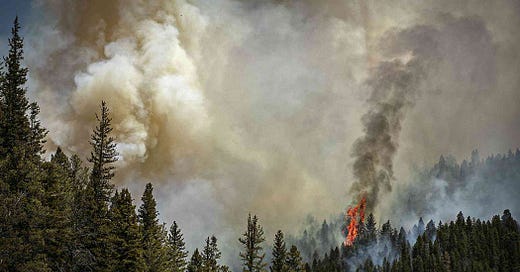


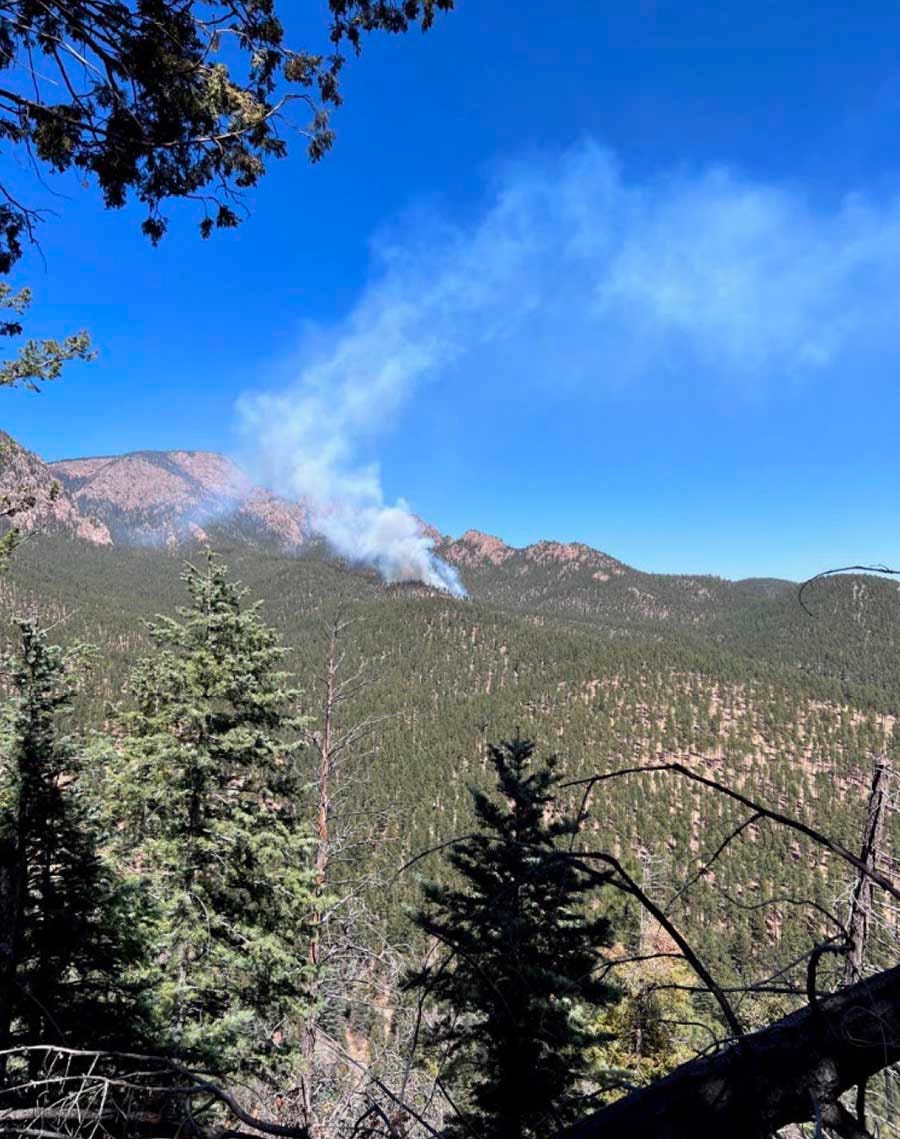



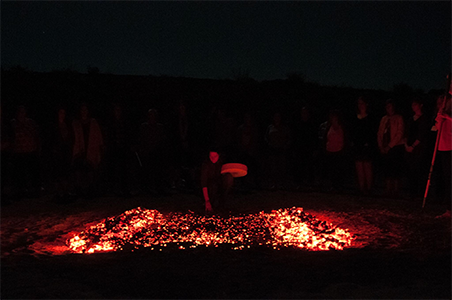
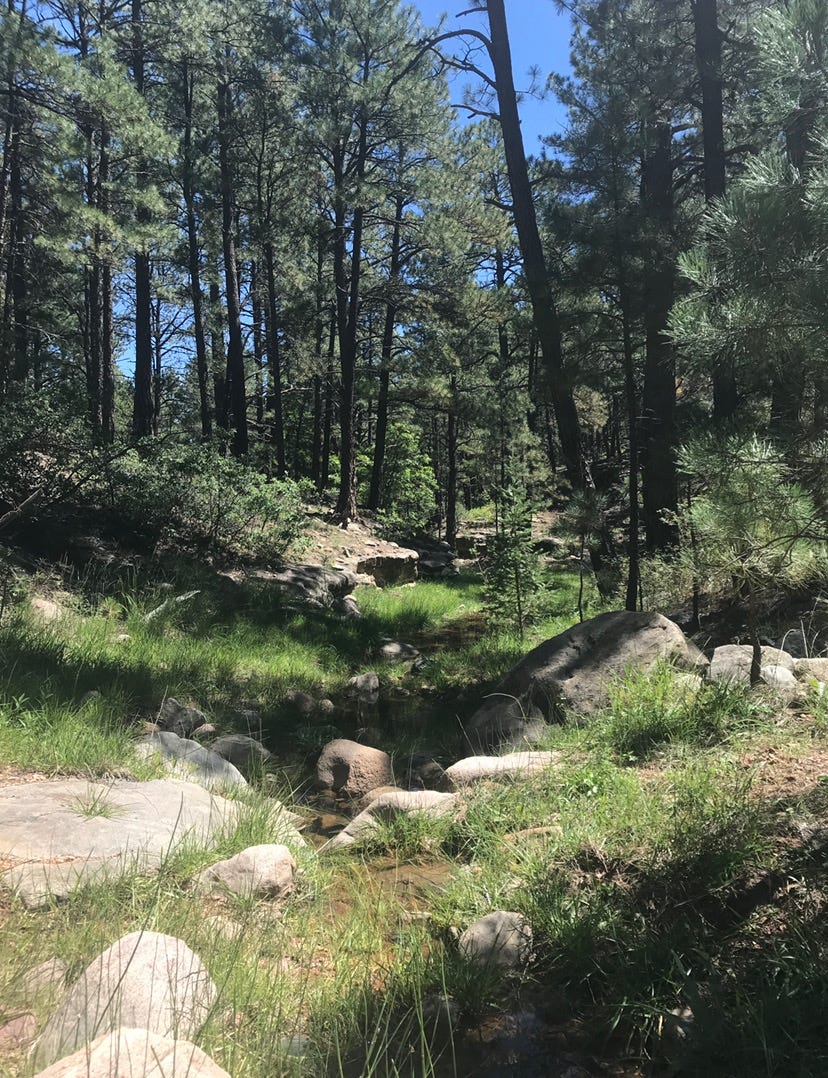

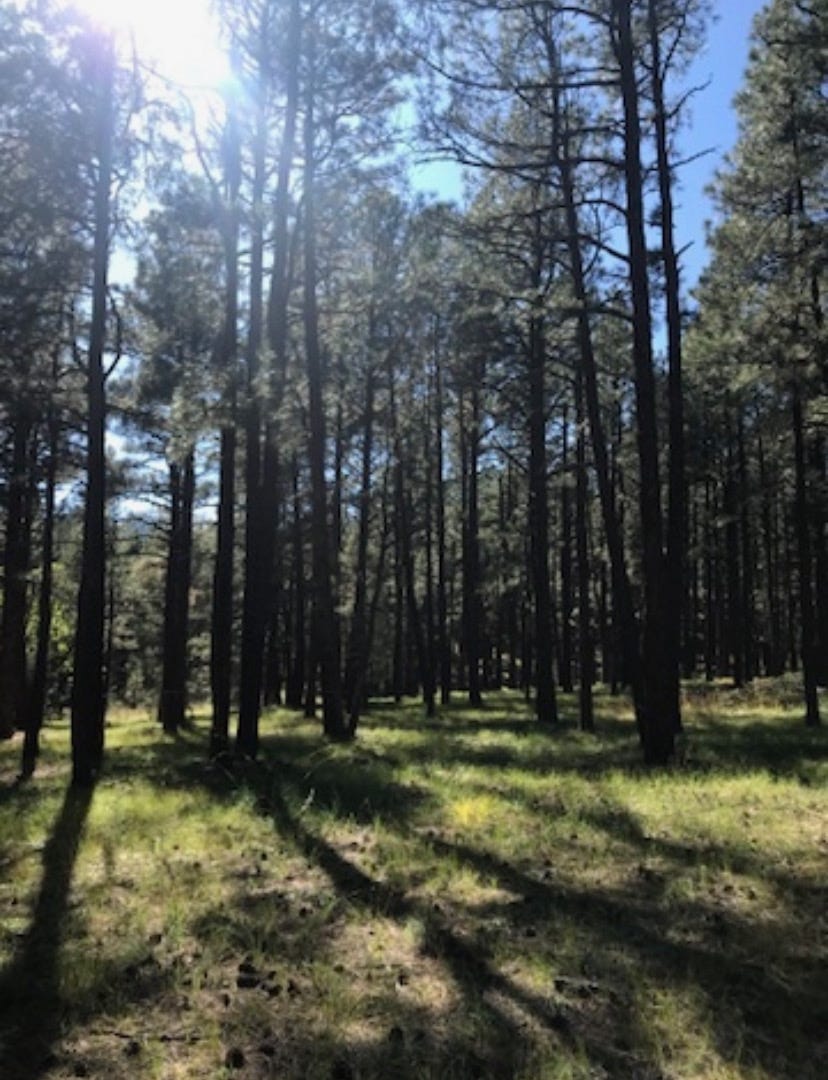
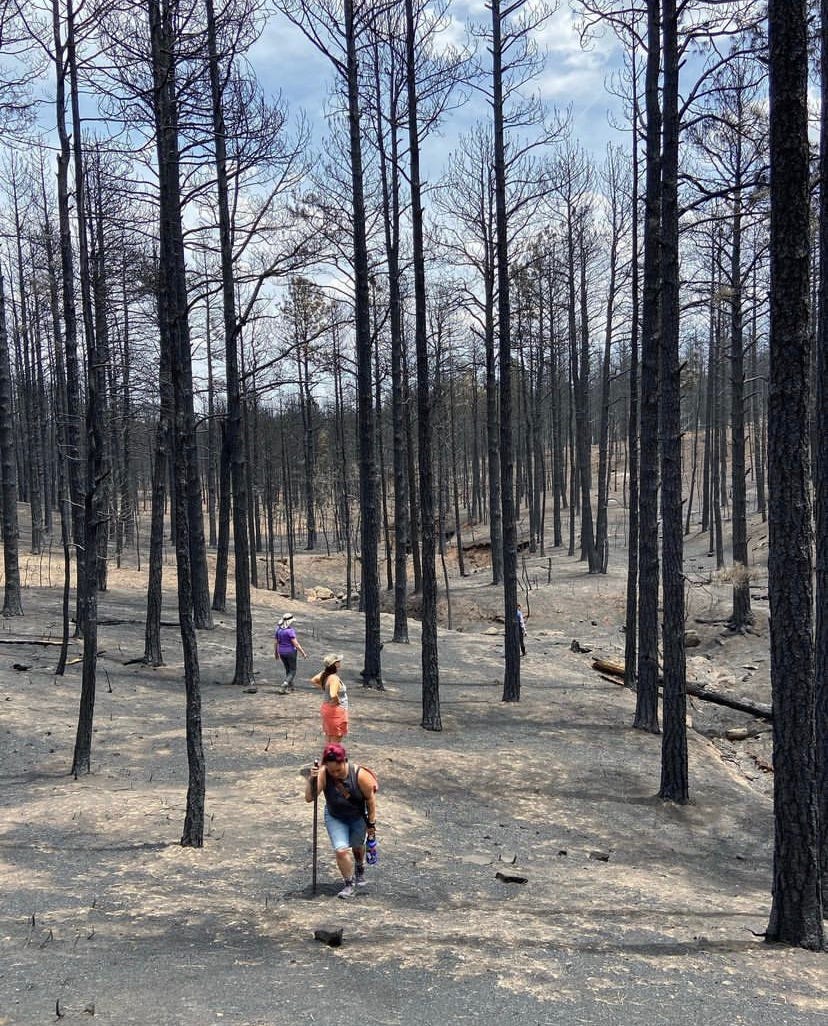
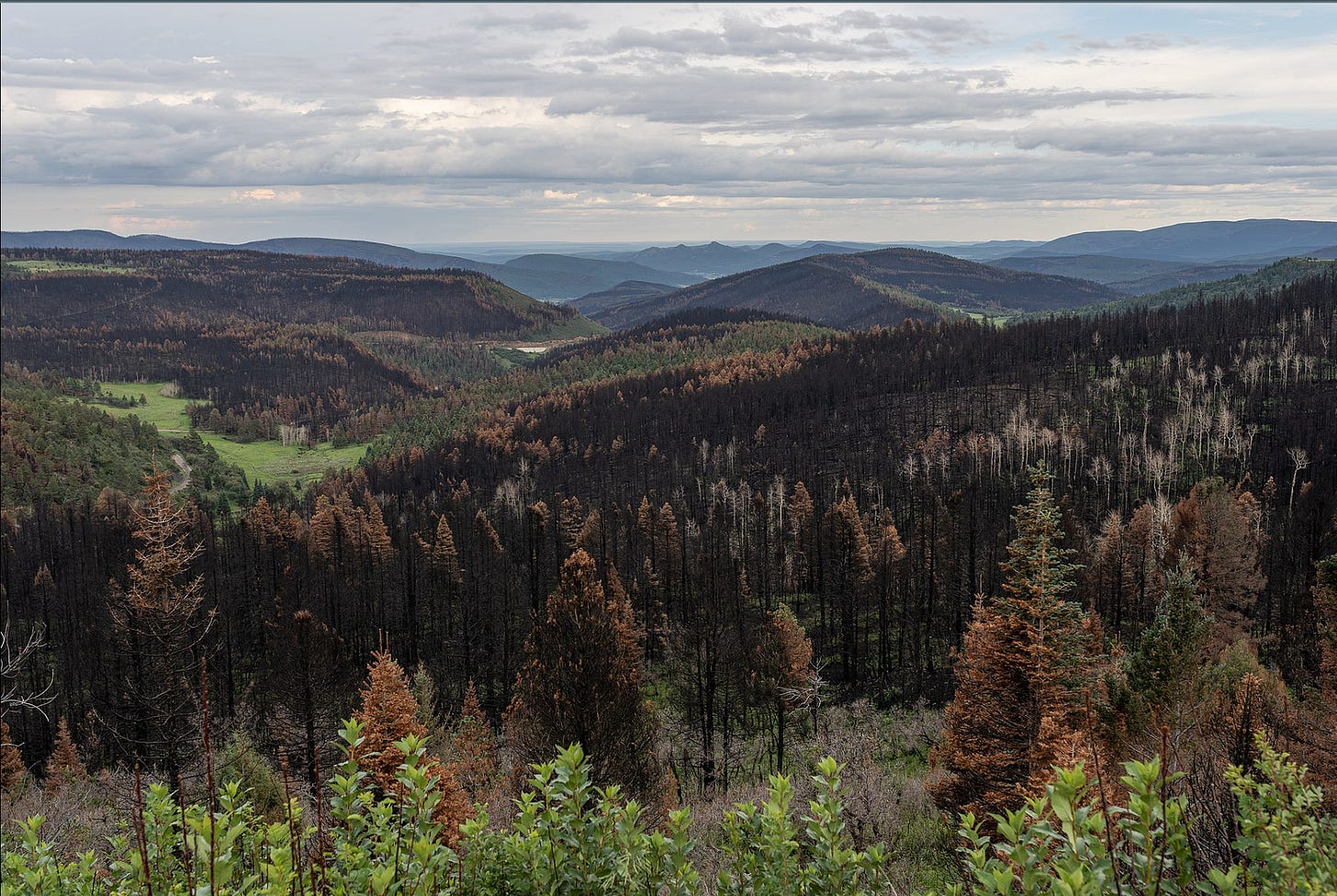
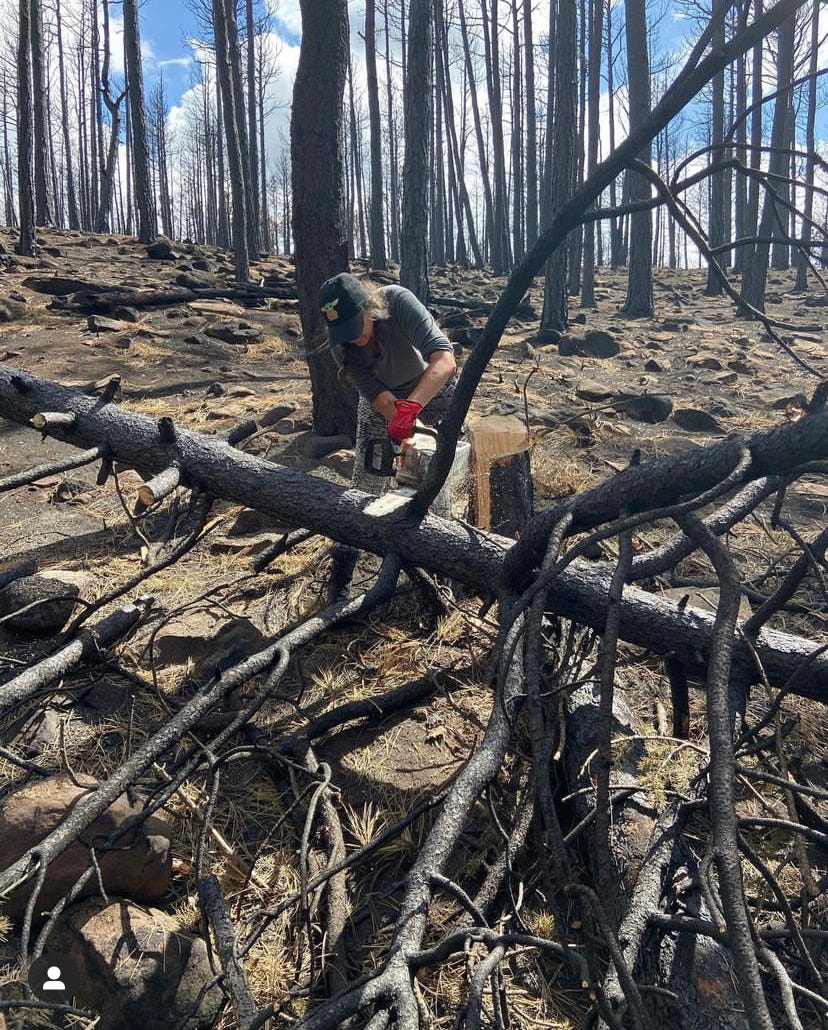

As I prepare to return to the ranch soon - a year after the fire- your article immediately brought back all the feelings of that time. The grief and the tears, the sadness and the gratitude/appreciation/love I feel for the land.
In many ways that visit- with the earth still smoking from the fire - broke me open in ways unimaginable... All the grief I was holding in my body from recently losing loved ones - poured out of me... and a recognition that the fire - and the lost of all that we hold precious - is not an ending, but an invitation to pivot and begin anew. A new dream, new vision.
I look forward to returning to the ranch - anew..💜
Heavy-hearted I sit here a bit in shock. I remember following this fire closely, yet I had no idea how vast is was, how utterly devastating it would be. Thank you for including us in your healing, your modeling and teaching us that's it's OK to be vulnerable, raw, exposed and true. I'm inspired by seeing how your intimacy with the land was your guide, and continues to deepen as you work with her regeneration. This gives me hope. She is coming back! I touched those trees. I felt the life there. So much love to you and your land. To each tree and each new sprout.